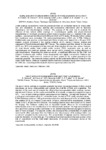Use este identificador para citar ou linkar para este item:
http://www.alice.cnptia.embrapa.br/alice/handle/doc/661991| Título: | Quality evaluation of natural edible coats on minimally processed yellow melon. |
| Autoria: | POCHAT, B.  FREIRE JUNIOR, M.   DUCAMP-COLLIN, M. N.   CABRAL, L. M. C.   SOARES, A. G.   MODESTA, R. C. D.   |
| Afiliação: | B. POCHAT, ENITIAA; MURILLO FREIRE JUNIOR, CTAA; M. N. DUCAMP-COLLIN, CIRAD; LOURDES MARIA CORREA CABRAL, CTAA; ANTONIO GOMES SOARES, CTAA; REGINA CELIA DELLA MODESTA. |
| Ano de publicação: | 2009 |
| Referência: | In: EUROPEAN FEDERATION OF FOOD SCIENCE AND TECHNOLOGY CONFERENCE, 2009, Budapest. New challenges in food preservation: processing: safety: sustainability. Wageningen: EFFoST, 2009. 1 CD-ROM. Ref. P272. |
| Conteúdo: | Edible coatings associated to minimally processed fruits are conducted mainly to reduce water loss and respiration, to delay ripening and senescence phenomena and to decrease physiological and microbiological problems. The purpose of this work was to evaluate the influence of two natural edible coatings on microbiological quality and physic-chemical characteristics of minimally processed yellow melon (Cucumis melo L.). Selected fruits were sanitized, brushed and disinfested with 200 ppm HClO at 5°C during 15 minutes before cutting. Two treatments were evaluated: 1% carboxymethylcellulose (CMC) and 0.75% Chitosan. Distilled water was used as control treatment. Melon chunks were dipped into a 30 ppm HClO solution, drained, immersed in the coating solutions at 5ºC during 2 minutes. drained and packaged in Polyethylenteraphtalate (PET) boxes. The samples were then stored for nine days at 2°C and 10°C and analyzed at 3-day intervals. Determination of mass loss, colour, firmness, pH, total titrable acidity, total soluble solids content (TSS), respiration rate, as well as microbiological and sensorial analysis, were carried out to evaluate the coating efficiency in both temperatures. Regarding the chemical results, a significant difference for the CMC and Chitosan treatments was verified. Colour components were lightly increased by Chitosan and CMC treatments, which seem to preserve the fresh aspect of the product according to the sensorial panellists. The sensorial analysis pointed out the undesirable effect of Chitosan on the coated fruits’ flavour. Chitosan treatment had the best microbiological results when compared to the CMC one. According to this study the best storage temperature was 2°C. |
| Thesagro: | Melão Processamento Mínimo |
| Tipo do material: | Resumo em anais e proceedings |
| Acesso: | openAccess |
| Aparece nas coleções: | Resumo em anais de congresso (CTAA)  |
Arquivos associados a este item:
| Arquivo | Descrição | Tamanho | Formato | |
|---|---|---|---|---|
| 2009228.pdf | 115,02 kB | Adobe PDF |  Visualizar/Abrir |









